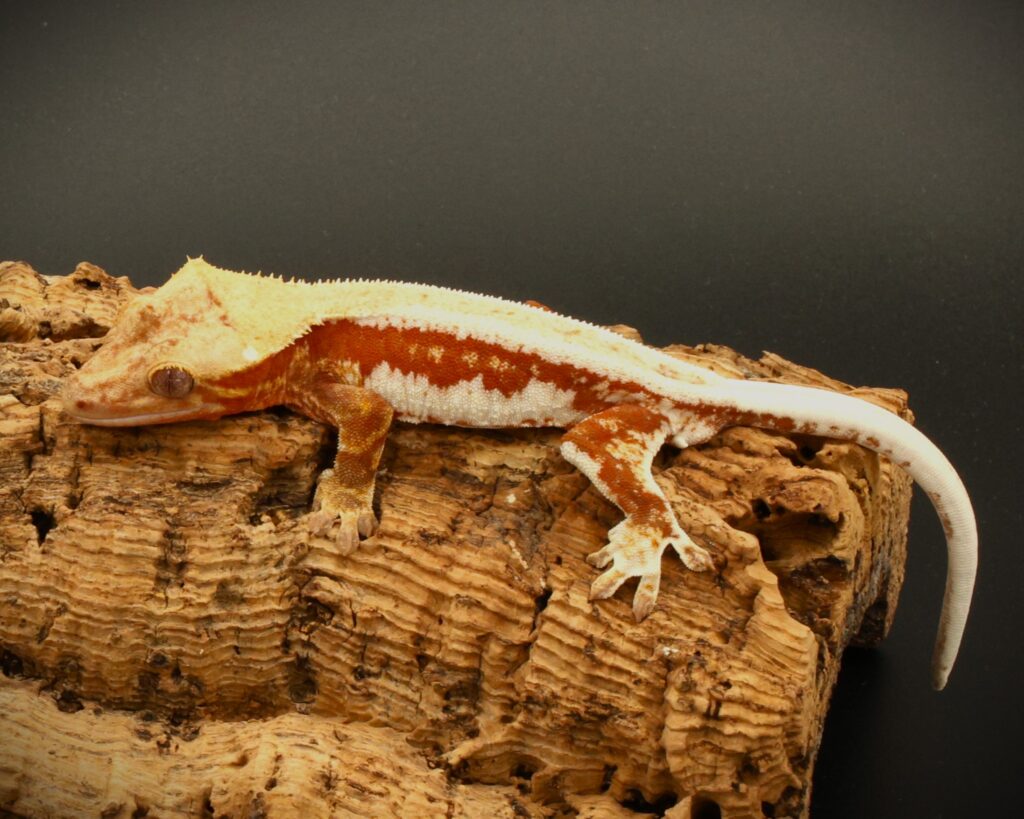Care Guide for Correlophus ciliatus
(Crested Gecko)
—
1. Housing
Tank Size: For an adult crested gecko, a 20-gallon tall tank is ideal. Vertical space is essential as they are arboreal (tree-dwelling).
Ventilation: Ensure good airflow to prevent mold and respiratory issues.
Substrate: Eco-friendly substrates like coconut fiber, orchid bark, or paper towels are safe and maintain necessary humidity.
Hides and Climbing: Add plenty of branches, vines, and hides, as these geckos enjoy climbing and hiding.
2. Temperature and Humidity
Temperature: Keep the enclosure between 72-78°F (22-25°C). Night temperatures can drop to around 65°F (18°C).
Humidity: Maintain humidity levels between 60-80%. Mist the enclosure once or twice daily, allowing it to dry partially between mistings.
3. Lighting
UVB Lighting: Although not strictly necessary, low-level UVB lighting can benefit your gecko’s health and activity. Ensure it does not overheat the tank.
Day/Night Cycle: Maintain a 12-hour light cycle to simulate natural conditions.
4. Diet
Commercial Diets: Crested geckos do well on commercial gecko diets formulated for them.
Insects: Offer live insects (like crickets or dubia roaches) once or twice a week. Dust them with calcium and vitamin D3 supplements.
Fruit: Occasionally, they enjoy mashed fruits like banana or mango, though commercial diets often include the fruit they need.
5. Handling and Temperament
Crested geckos are generally gentle and can be handled, but avoid overhandling as it can stress them. Support their body, and allow them to explore your hand without gripping their tail, which can be shed as a defense mechanism.
6. Health and Hygiene
Shedding: Regularly mist to help with shedding. They often consume their shed skin.
Cleaning: Spot clean daily and deep clean monthly.
Signs of Illness: Watch for signs like lack of appetite, lethargy, or difficulty shedding, and consult a reptile veterinarian if needed.
—
With these guidelines, your Correlophus ciliatus should thrive in its environment
